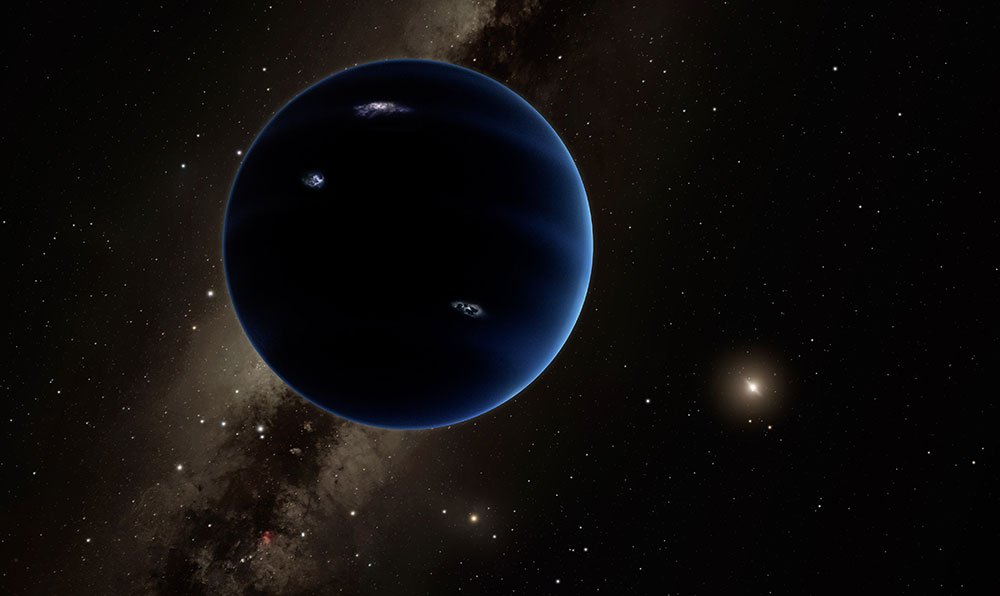
Artist rendering shows the distant view from Planet Nine back towards the sun; Image courtesy of: Caltech/R. Hurt (IPAC).
Pluto was removed as a planet but new research from the Kuiper Belt, a massive icy debris disc just outside of our solar system, has unveiled evidence that a large planet far bigger than Pluto may be lurking right on the edge of the belt.
Dubbed “Planet X” or “Planet Nine”, evidence continues to mount in favor of this planet being included in our solar system. The existence of a "lost" Planet Nine early in the formation of the solar system which was ejected from its orbital path over time would go far in explaining how and why the solar system looks as it does today.
Recently, a team of scientists collaborating from China, France, and the United States, ran approximately 14,000 simulations of the early solar system to learn more about its formation, the debris field just outside the system, the planets we know so far and even the prevalence of gas giants which may have once been part of the early formation of this system.
The simulations hint that gas coalesced into the early sun triggering strong fusion reactions that knocked the orbit of large planets off kilter, expelling gas, dust and even planets outwards. This expulsion is likely to have disrupted Planet X’s orbit and sent the planet into the debris field of the Kuiper Belt.
Professor Seth Jacobson, a planetary scientist of Michigan State University called this phenomenon of fusion reactions a "universal source of planetary instability in the galaxy."
"What's really cool is exoplanet astronomers have already confirmed that a very high percentage of both gas giant systems as well as super-earth systems have gone through planetary system instabilities, and we think the solar system is similar," Jacobson continued.
Early on, our proto-sun started to experience rises in temperature which heated and ionized gaseous elements in the debris disk.The inner edge of this gaseous disk would then pull the planets with it as it expanded outward. This could have pulled a Planet Nine-type world out of the solar system completely.
In 90% of simulated scenarios, this instability in orbit was triggered causing the planets to move outwards. The mystery of our solar system's early evolution is still uncertain. Theory suggests this giant planet instability event occurred roughly half a billion years after the solar system formed, and would have been caused by a gravitational encounter between two planets, setting off a chain of destabilizing reactions which would propel the planet outwards.
"Instability would always occur very early in solar system history, a few million years after the start," Jacobson added. "The sun would still be in its stellar cluster at that time. If there was an ejected ice giant, then that ejected ice giant might not have truly been ejected. It might have been caught on this elliptical orbit."
Jacobson said the moving-around of planets was a surprise result of the simulation. "What I think even we didn't completely appreciate until after we had started these simulations is that there's still enough gas in the disk and this process still takes enough time that it can significantly affect the orbits of the planet as the process takes place," he noted.
Further research is needed to determine more about Planet X but for now, scientists have key data which hints that PLanet X may just be the next 9th planet in our Solar System.
Sorry, Pluto.